Filter by
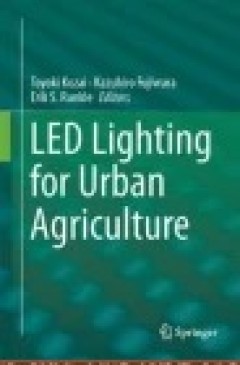
LED Lighting for Urban Agriculture
This book focuses on light-emitting diode (LED) lighting, mainly for the commercial production of horticultural crops in plant factories and greenhouses with controlled environments, giving special attention to: 1) plant growth and development as affected by the light environment; and 2) business and technological opportunities and challenges with regard to LEDs. The book contains more than 30 …
- Edition
- -
- ISBN/ISSN
- 978-981-10-1848-0
- Collation
- -
- Series Title
- -
- Call Number
- -
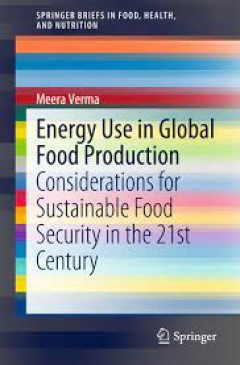
Energy Use in Global Food Production Considerations for Sustainable Food Sec…
This Brief examines the sustainability of energy use in global food production and processing. The nexus between food, water, and energy are explored against a background of climate change. Current efforts to reduce the energy intensity of food and increase sustainability are explored. Food waste and its impact on energy is covered, including regional variations and nutrient recycling method…
- Edition
- -
- ISBN/ISSN
- 978-3-319-16781-7
- Collation
- 4 illustrations in colour
- Series Title
- -
- Call Number
- -

Therapeutic Potentials of Curcumin for Alzheimer Disease
This is the first book on the market that explores the importance of curcumin for the treatment of neurological disorders. It has been estimated that 35.6 million people globally had dementia in 2010 and the prevalence of dementia has been predicted to double every 20 years. Thus, 115.4 million people may be living with dementia in 2050. Alzheimer’s disease (AD) is the leading cause of dement…
- Edition
- -
- ISBN/ISSN
- 978-3-319-15889-1
- Collation
- 45 b/w illustrations, 45 illustrations in colour
- Series Title
- -
- Call Number
- -
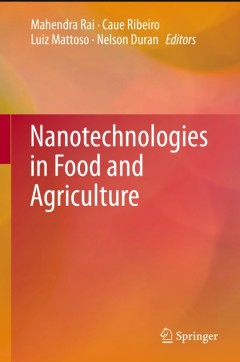
Nanotechnologies in Food and Agriculture
This book presents a comprehensive overview of new and emerging nanotechnologies. It includes aspects of nanoparticle monitoring, toxicity, and public perception, and covers applications that address both crop growing and treatment of agricultural wastewater. Topics include nanoagrochemicals (nanofertilizers, -pesticides, -herbicides), nanobiosensors, and nanotechnologies for food processing, p…
- Edition
- 1
- ISBN/ISSN
- 978-3-319-14023-0
- Collation
- XV, 347
- Series Title
- -
- Call Number
- -
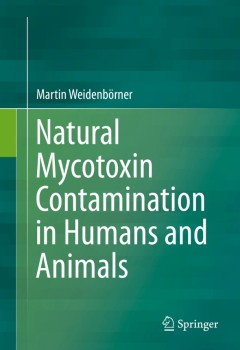
Natural Mycotoxin Contamination in Humans and Animals
This book presents a review of the existing literature on natural mycotoxins to create a comprehensive reference for mycotoxin levels. Each entry includes contamination, concentration rate, mostly mean mycotoxin concentration of organs (human and animal) and country of origin of the sample. Due to the serious spoilage and health issues the presence of mycotoxins can cause, it is imperative tha…
- Edition
- 1
- ISBN/ISSN
- 978-3-319-16039-9
- Collation
- XXVIII, 360
- Series Title
- -
- Call Number
- -

The Sustainability of Agro-Food and Natural Resource Systems in the Mediterra…
This book is focused on the challenges to implement sustainability in diverse contexts such as agribusiness, natural resource systems and new technologies. The experiences made by the researchers of the School of Agricultural, Forestry, Food and Environmental Science (SAFE) of the University of Basilicata offer a wide and multidisciplinary approach to the identification and testing of differ…
- Edition
- -
- ISBN/ISSN
- 978-3-319-16357-4
- Collation
- -
- Series Title
- -
- Call Number
- -

Emerging Economies Food and Energy Security, and Technology and Innovation
This volume brings together research on development in three major areas of contemporary global relevance: agriculture and food security, energy, and the institutions of national innovation. Covering six of the largest emerging and developing economies (EDEs) in the world, three Asian (China, India and Malaysia), two Latin American (Brazil and Mexico), and one African (South Africa), the book …
- Edition
- 1
- ISBN/ISSN
- 978-81-322-2101-2
- Collation
- 99 b/w illustrations
- Series Title
- -
- Call Number
- -
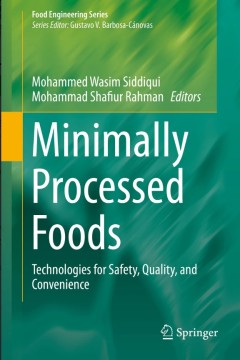
Minimally Processed Foods
The safety and efficacy of minimal food processing depends on the use of novel preservation technologies. This book first examines what is meant by minimally processed foods, including fresh-cut, cooked-chilled, and part-baked products. Next explored are the technologies or methods to produce quality products in terms of safety and nutrition, including: edible coating, natural preservatives (i.…
- Edition
- 1
- ISBN/ISSN
- 978-3-319-10676-2
- Collation
- XII, 306
- Series Title
- Food Engineering Series
- Call Number
- -
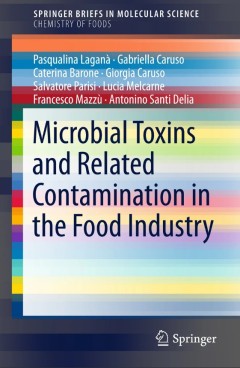
Microbial Toxins and Related Contamination in the Food Industry
This Brief concerns the chemical risk in food products from the viewpoint of microbiology. The “Hazard Analysis and Critical Control Point” (HACCP) approach, which is applied for this purpose, is dedicated to the study and the analysis of all possible dangers by food consumptions and the related countermeasures with the aim of protecting the health of consumers. This difficult objective is …
- Edition
- -
- ISBN/ISSN
- 978-3-319-20558-8
- Collation
- VI, 101
- Series Title
- SpringerBriefs in Molecular Science
- Call Number
- -
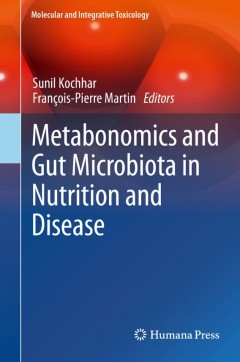
Metabonomics and Gut Microbiota in Nutrition and Disease
This book provides a comprehensive overview of metabonomics and gut microbiota research from molecular analysis to population-based global health considerations. The topics include the discussion of the applications in relation to metabonomics and gut microbiota in nutritional research, in health and disease and a review of future therapeutical, nutraceutical and clinical applications. It also …
- Edition
- 1
- ISBN/ISSN
- 978-1-4471-6538-5
- Collation
- XVI, 375
- Series Title
- Molecular and Integrative Toxicology
- Call Number
- -
 Computer Science, Information & General Works
Computer Science, Information & General Works  Philosophy & Psychology
Philosophy & Psychology  Religion
Religion  Social Sciences
Social Sciences  Language
Language  Pure Science
Pure Science  Applied Sciences
Applied Sciences  Art & Recreation
Art & Recreation  Literature
Literature  History & Geography
History & Geography